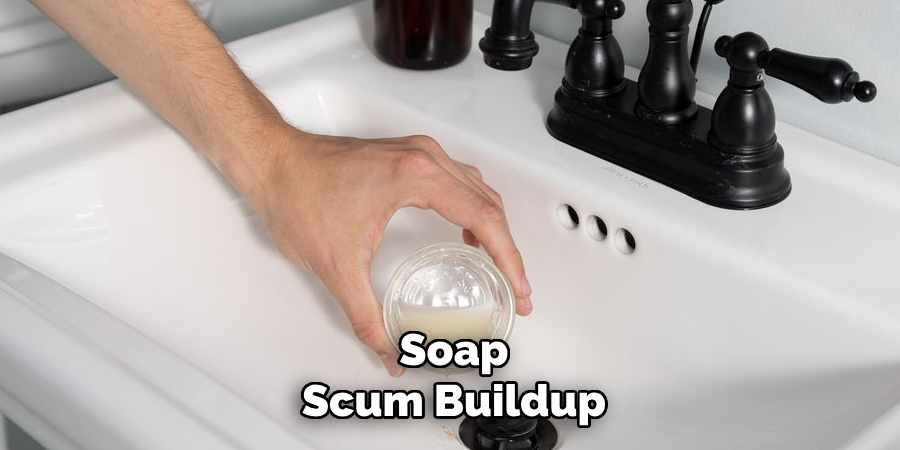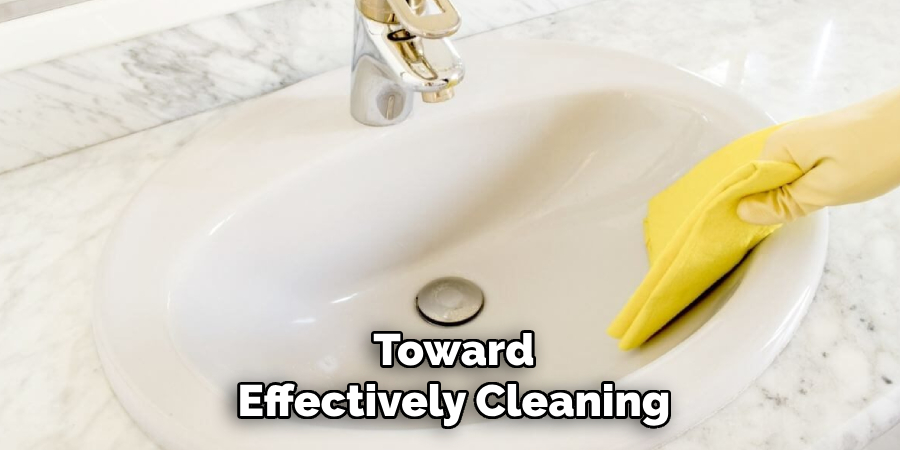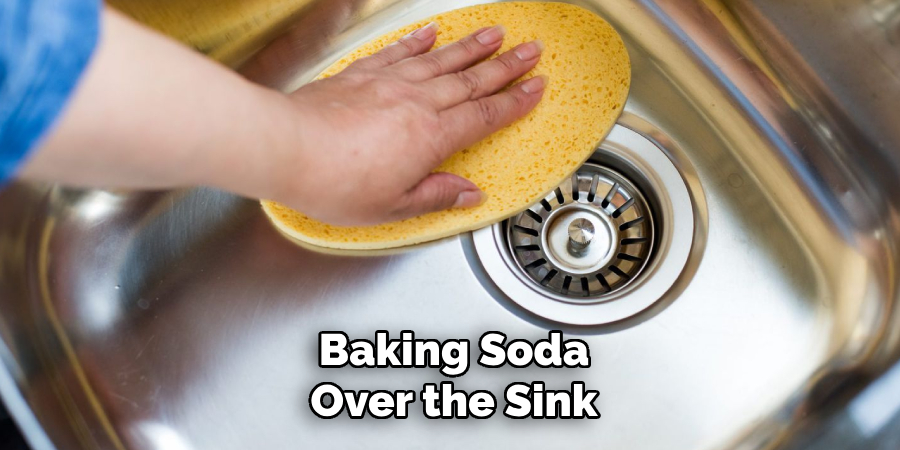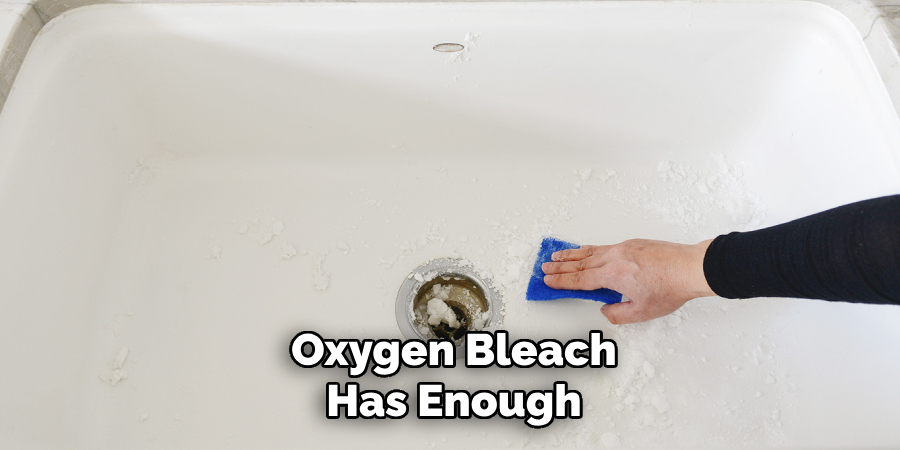Ceramic sinks are a popular choice for many households due to their durability, glossy finish, and resistance to most types of stains.
They add a timeless elegance to any kitchen or bathroom, but even these sturdy fixtures are not entirely immune to wear and tear. Over time, tough marks and discoloration can develop, detracting from their beauty. Common culprits include hard water deposits, rust, coffee, tea, food stains, and soap scum buildup. These stains can be remarkably stubborn, requiring more than just a quick rinse to remove.

This article aims to provide you with practical and effective methods for how to remove tough stains from ceramic sink, ensuring it looks as good as new. Using everyday household products and some deep-cleaning techniques, you’ll learn how to tackle even the most persistent stains and restore your sink’s original shine effortlessly.
Understanding the Causes of Stains in Ceramic Sinks
Ceramic sinks are durable and elegant, but they are not immune to staining caused by everyday use. Understanding the root causes of these stains can help you effectively combat them and maintain your sink’s pristine appearance.
Hard Water Stains
Hard water is a common culprit behind unsightly stains. Mineral deposits, particularly calcium and magnesium, accumulate over time, creating a chalky, white residue. These deposits result from water evaporation that leaves the dissolved minerals behind, making the sink appear dull and discolored.
Rust Stains
Rust stains often occur when metal objects, such as cans, utensils, or cleaning tools, are left on the sink’s surface. Over time, moisture reacts with the metal, leading to oxidation and reddish-brown streaks or spots that can be challenging to remove.
Food and Beverage Stains
Ceramic sinks are prone to discoloration from coffee, tea, wine, and food dyes. The pigments in these materials can seep into the surface if spills are not cleaned promptly, leaving stubborn stains that gradually build up.
Soap Scum and Grease Buildup
Frequent use of soap and greasy dishes can lead to the accumulation of soap scum and grease, which dull the sink’s finish. These residues create a sticky layer that attracts dirt, reducing the sink’s shine over time.
Understanding these causes is the first step toward effectively cleaning and preventing tough stains in your ceramic sink.
Essential Cleaning Supplies

To keep your ceramic sink looking spotless and shining, having the right cleaning supplies on hand is important. Here’s a breakdown of what you’ll need for everyday cleaning and tackling tough stains:
Everyday Cleaning Supplies
- Baking Soda – A mild abrasive that helps remove stains and odors without damaging the sink.
- White Vinegar – Excellent for dissolving mineral deposits and cutting through grease.
- Dish Soap – A gentle cleaner for daily maintenance.
- Hydrogen Peroxide – Useful for disinfecting and whitening stained areas.
- Lemon Juice – A natural alternative for removing stains and leaving a fresh smell.
- Magic Eraser – Ideal for tackling surface stains and restoring the luster of your sink.
For Tough Stains
- Oxygen Bleach or Chlorine Bleach – Effective for removing stubborn stains and disinfecting heavily soiled areas.
- Bar Keepers Friend or similar ceramic-safe abrasive cleaner – Perfect for tackling grime without scratching.
- Pumice Stone – A solution for extreme rust or hard water stains, used carefully to avoid damage.
Cleaning Tools
- Soft Sponge or Cloth – Gentle on ceramic surfaces, great for everyday cleaning.
- Scrub Brush or Old Toothbrush – Handy for reaching hard-to-clean corners and crevices.
- Rubber Gloves – Protect your hands when using strong cleaners or abrasive materials.
Having these supplies ready ensures you can easily address regular maintenance and unexpected messes.
How to Remove Tough Stains from Ceramic Sink: Daily Cleaning Routine
Maintaining a daily cleaning routine for your ceramic sink helps preserve its shine and prevent stubborn stains from forming over time. Follow these easy steps to keep your sink looking pristine:
Rinse with Warm Water
Start by rinsing the sink thoroughly with warm water. This will help wash away any surface debris, such as food particles or dirt, making cleaning more effective.
Apply Dish Soap
Next, apply a small amount of gentle dish soap to a soft sponge. Use the sponge to wipe down the entire sink surface, focusing on areas with grease or food residue. Dish soap effectively breaks down oils and grime without harming your sink.
Sprinkle Baking Soda
For mild stains or to enhance cleanliness, sprinkle a thin layer of baking soda over the sink. Baking soda is a gentle abrasive, making it safe for ceramic surfaces. Gently scrub the sink using circular motions with your sponge or a soft brush, targeting any discolored areas.

Rinse and Dry
Once you’re finished scrubbing, rinse the sink thoroughly with warm water to remove any soap or baking soda residue. Finally, dry the sink using a microfiber cloth to prevent water spots from forming and maintain its polished appearance.
By incorporating this quick and simple routine into your daily habits, you can ensure your ceramic sink stays clean, hygienic, and visually appealing every day.
How to Remove Tough Stains from Ceramic Sink: Removing Tough Stains
Over time, ceramic sinks can accumulate tough stains from hard water, rust, or food and beverages. Here’s how to effectively tackle each type of stain:
For Hard Water Stains
Hard water stains are caused by mineral deposits that leave stubborn marks on your sink’s surface. Mix equal parts vinegar and water in a spray bottle to remove them.
Apply the solution generously to the affected area and allow it to sit for 15 minutes. This gives the vinegar time to break down the mineral buildup. Afterward, scrub the area with a sponge, paying close attention to the stains. Rinse thoroughly with warm water to remove any residue and reveal a clean surface.
For Rust Stains
Rust stains can be particularly challenging but are manageable with the right approach. Create a paste by combining baking soda and lemon juice, a natural stain remover.
Apply the paste directly to the rust stain and allow it to sit for 10–15 minutes. Use an old toothbrush to scrub the area gently, focusing on the stain without scratching the surface. Rinse the sink well and repeat the process if necessary until the stain disappears.
For Food and Beverage Stains
Food and beverage stains can discolor your sink if left untreated. To remove them, pour hydrogen peroxide directly onto the stained area. Allow it to sit for approximately 10 minutes to break down the discoloration. Then, use a soft cloth to scrub the area gently. Afterward, rinse the sink thoroughly for a spotless finish. Repeat the process if needed for more persistent stains.
Deep Cleaning and Whitening the Sink
If your sink has lost its sparkle or requires a deeper clean, there are several effective methods to restore its shine and whiteness:
Using Oxygen Bleach:
Fill the sink with warm water and add a scoop of oxygen bleach, following the product’s instructions for proper measurement. This solution is perfect for breaking down tough stains and brightening the surface.
Allow the sink to soak for approximately 30 minutes, ensuring the oxygen bleach has enough time to work its magic. Once done, drain the sink and use a sponge to scrub away residue or lingering stains gently. Rinse thoroughly to reveal a refreshed and polished sink.
Using Bar Keepers Friend:

Sprinkle a generous amount of Bar Keepers Friend powder directly onto the stained areas of the sink. Use a damp sponge to scrub in circular motions, tackling discoloration and built-up grime effectively.
Allow the product to sit for a few minutes to maximize its stain-removing power, but avoid leaving it for too long as it may cause damage. Finally, rinse the sink thoroughly with water to remove all residue. This method will leave your sink looking clean and rejuvenated.
Repeat these methods periodically to maintain your sink’s brightness and cleanliness.
Preventing Future Stains
Preventing stains in your sink is key to maintaining its shine and longevity. One of the simplest and most effective steps is to wipe the sink dry after each use. By doing so, you can prevent water spots and mineral deposits from forming. Additionally, avoid leaving metal objects, such as utensils or cookware, in the sink for extended periods. These items can sometimes lead to rust that stains the sink’s surface.
Using a sink protector mat is another excellent precaution. These mats act as a protective barrier between the sink and items that may cause scratches or stains, such as heavy pots, pans, or strongly pigmented foods. They can help significantly reduce the risk of discoloration or damage. It’s also helpful to clean the mat regularly to avoid any buildup of dirt or debris.
Lastly, establish a routine of general upkeep, including cleaning the sink with mild cleaners and avoiding harsh chemicals that could dull its finish. By incorporating these preventative measures into your daily habits, you can ensure your sink remains clean, stain-free, and a gleaming centerpiece in your kitchen for years to come.

Conclusion
Maintaining the pristine look of your ceramic sink requires a combination of regular care and effective stain-removal techniques. You can easily prevent stubborn buildup by addressing spills promptly and establishing a routine cleaning schedule. For minor stains, mild cleaners paired with a soft sponge are effective, while tougher stains may require gentle use of baking soda or vinegar.
Remember, understanding “how to remove tough stains from ceramic sink” is essential, but always use mild abrasives sparingly to avoid damaging the glossy finish. With consistent attention and the right methods, your ceramic sink will retain its beauty and functionality for years.
Professional Focus
Harry Ciotti is a highly skilled kiln operator with a sharp eye for detail and an in-depth understanding of the firing process. His expertise ensures that each ceramic piece reaches its full potential, perfectly balancing strength and beauty. Harry takes pride in overseeing the final stage of pottery creation, transforming raw clay into durable and stunning works of art.
About the Author
Harry Ciotti is a dedicated kiln operator and ceramic artist who brings passion and precision to every piece he fires. With a deep commitment to craftsmanship, Harry ensures that every ceramic creation is fired to perfection, from delicate vases to robust sculptures. He not only operates the kiln, but understands the unique needs of each piece, ensuring it reaches its full artistic potential. Through his work, Harry blends precision with artistry, making every firing a story of transformation.
Education History
University: California College of the Arts
Degree: Master of Fine Arts in Ceramics
Harry’s advanced education in ceramics has refined his technical skills, particularly in kiln operation, firing processes, and ceramic artistry. His educational background equips him to produce top-quality ceramic pieces that reflect both technical excellence and artistic expression.
Expertise:
- Kiln Operation and Firing Techniques
- Ceramics Creation (Functional and Artistic)
- Precision Craftsmanship
- Glazing and Texture Techniques
- Ceramic Artistry and Storytelling
